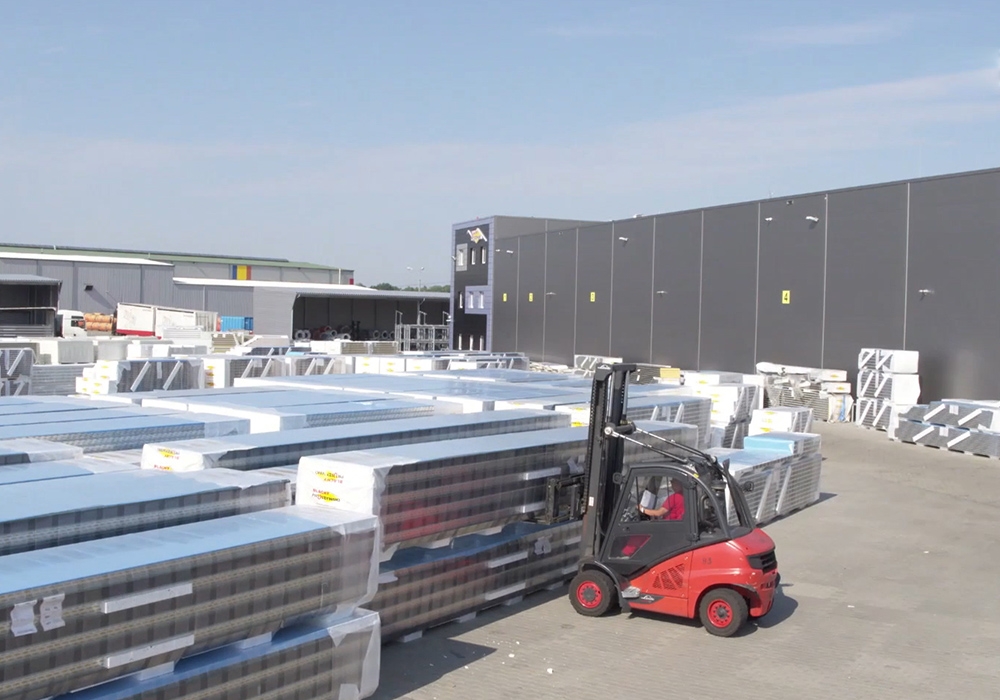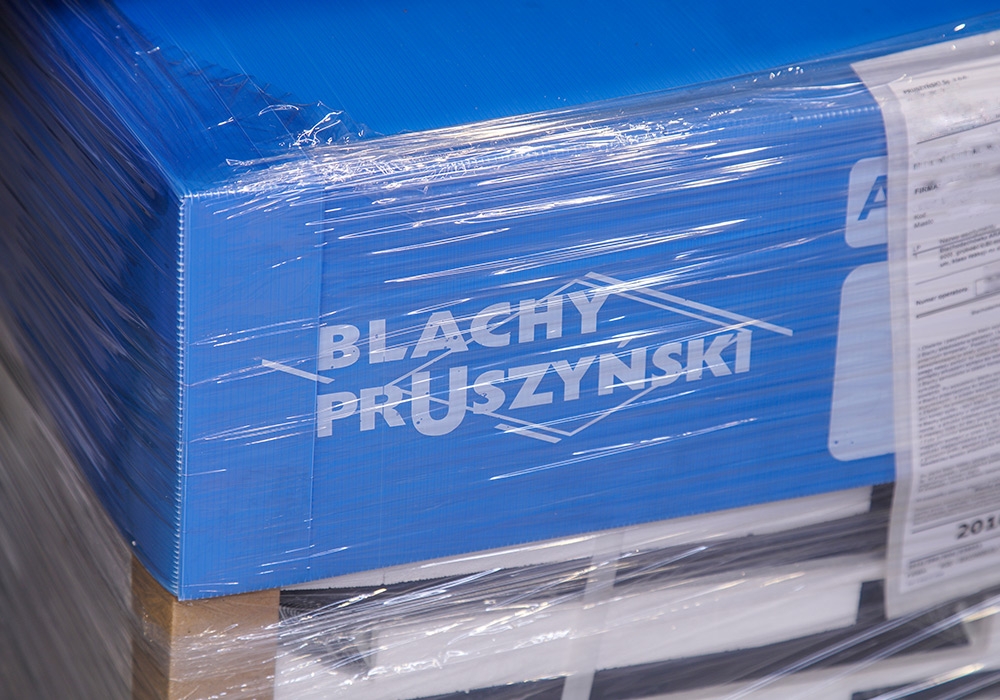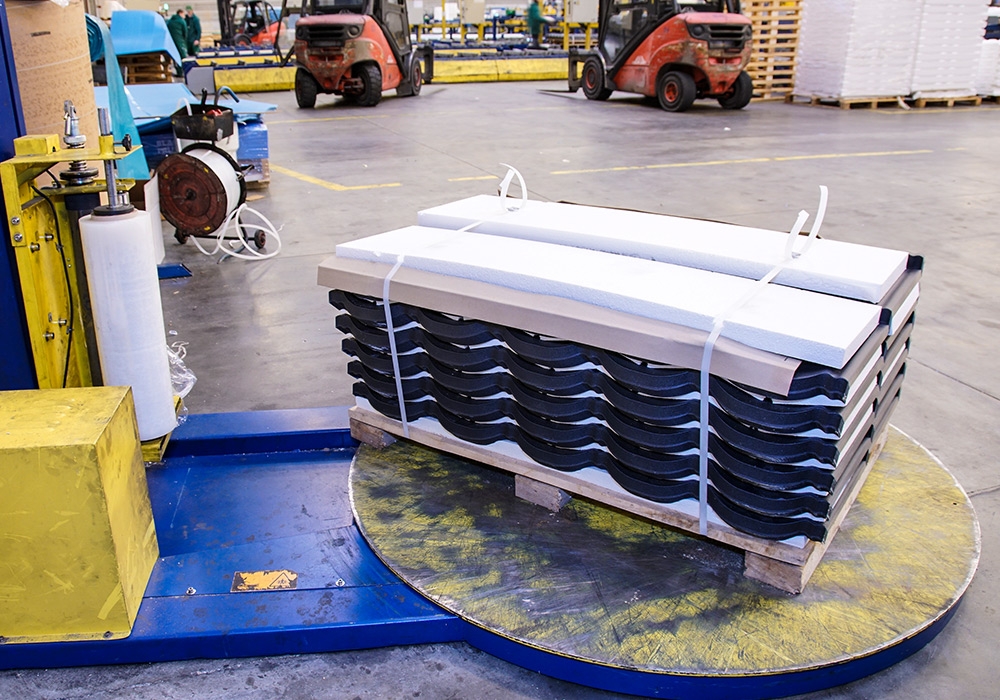In order for the roof of our house to look aesthetically and fulfilled its functions for many years, and not to lose the manufacturer’s warranty, the roof tile should be transported and stored on the construction site in the right way.
It happens that we buy a metal roofing tile long before laying the roofing. So if the material has to wait a few or several weeks for assembly, then to avoid damage to its structure or prevent deformation, we must ensure adequate transport, unloading and storage of sheet metal. It is also important when the tin cover is laid immediately after delivering to the construction site. It is worth emphasizing once again that the correct transport of roof tiles and its proper storage before assembly is a condition for a positive consideration of the warranty by the manufacturer.

Usually, we do not transport sheets of the sheet alone, but it is worth knowing how it should be transported and what should worry us when the roofing is delivered to the construction site. Transport of metal roofing tiles is most often carried out with a van with an open platform – this will facilitate loading and unloading. The cover should be protected against precipitation, as it is threatened with corrosion. No sheet can protrude outside the vehicle. The sheets must be attached so that they do not jump and move during transport. Unfortunately, the manufacturer does not provide a guarantee for the resulting damage during incorrect transport. Panel metal roof tiles have small dimensions. Packages – arranged on a palette – consist of several sheets separated from each other with special polystyrene spacers (they reproduce the geometry of the metal roofing sheet). The task of spacers is to stabilize individual sheets. If we notice any deficiencies, delivery errors or damage caused during transport, then we must report them to the supplier (we have 7 days for this) and record in the delivery document, in two single copies for each page.

If the sheets are large, then a few people are needed to unload to not bend the sheet. For 1 m.b. The sheet should fall a minimum of 1 person. For example, if the length of the sheet is greater than 6 m.b., then 6 people will need it – 3 on each side. The sheets should be moved individually, vertically and grabbed in places where they are the most important. Do not bend them, because then the cover can be leaky or drag them one after the other, so that the coating does not scratch. They must not be moved on the ground, because the resulting scratches will reduce the durability of sheet metal. Roof sheet metal should not be laid on the ground. We need to provide them with a minimum of 20 centimeters of wood. The sheet sheets are laid flat, one on top of the other up to a maximum height of 1 m. Individual sheets must be separated from each other by wooden blocks, which will allow free air circulation. Lack of proper ventilation can lead to water vapor condensation, which can lead to discoloration and sheet metal. Of course, such damage, as the result of a bad storage of metal roofs, are not covered by the warranty. Cover the whole with foil, thus protecting the cover material against precipitation. If we intend to store the tin roofs for a long time, then place them in a dry and airy building, on an even and hard surface, away from chemicals that could react with the sheet. We deal with them the same, i.e. translations with slats and insulate from the ground. Remember, however, that in order not to lose the manufacturer’s warranty, we can store a maximum of 6 months on the construction site.
If damage and scratches arise during transport, unloading or storage, we will immediately protect these places with colorless varnish. In the event of a sheet metal, all sheets must be dried. Storing wet sheet can cause a paint coating burn or lead to corrosion foci.

Panel sheet metal packages are small and light. Two people are enough to carry them. If they are to be laid for a few to several days, we can store them in the original packaging, for example, under the tarpaulin-the tarpaulin cannot touch the sheet, because unwanted reactions may occur. We store a maximum of 3 packages on top of each other, separate each layer with slats. A higher stack can cause deformation of the sheets, which in turn hinders the installation of a tin cover. Parcels must not be arranged directly on the ground. We store them on EuroPalalets or set up every 1 m in height of about 20 cm high (e.g. boards lying on wooden blocks or concrete blocks). If the metal roof tiles have not been laid for 3 months, then after this time we need to cut the production film and put individual sheets with thin strips – in this way we will provide adequate air circulation around them.
Minimalism is still in fashion. And it’s not just about interior design. This trend has also […]
Read moreIf we talk about tin roofing, then we usually mean roofing metal. No wonder, because most […]
Read moreThe type of roof is a significant impact on the appearance of our house, as well […]
Read more